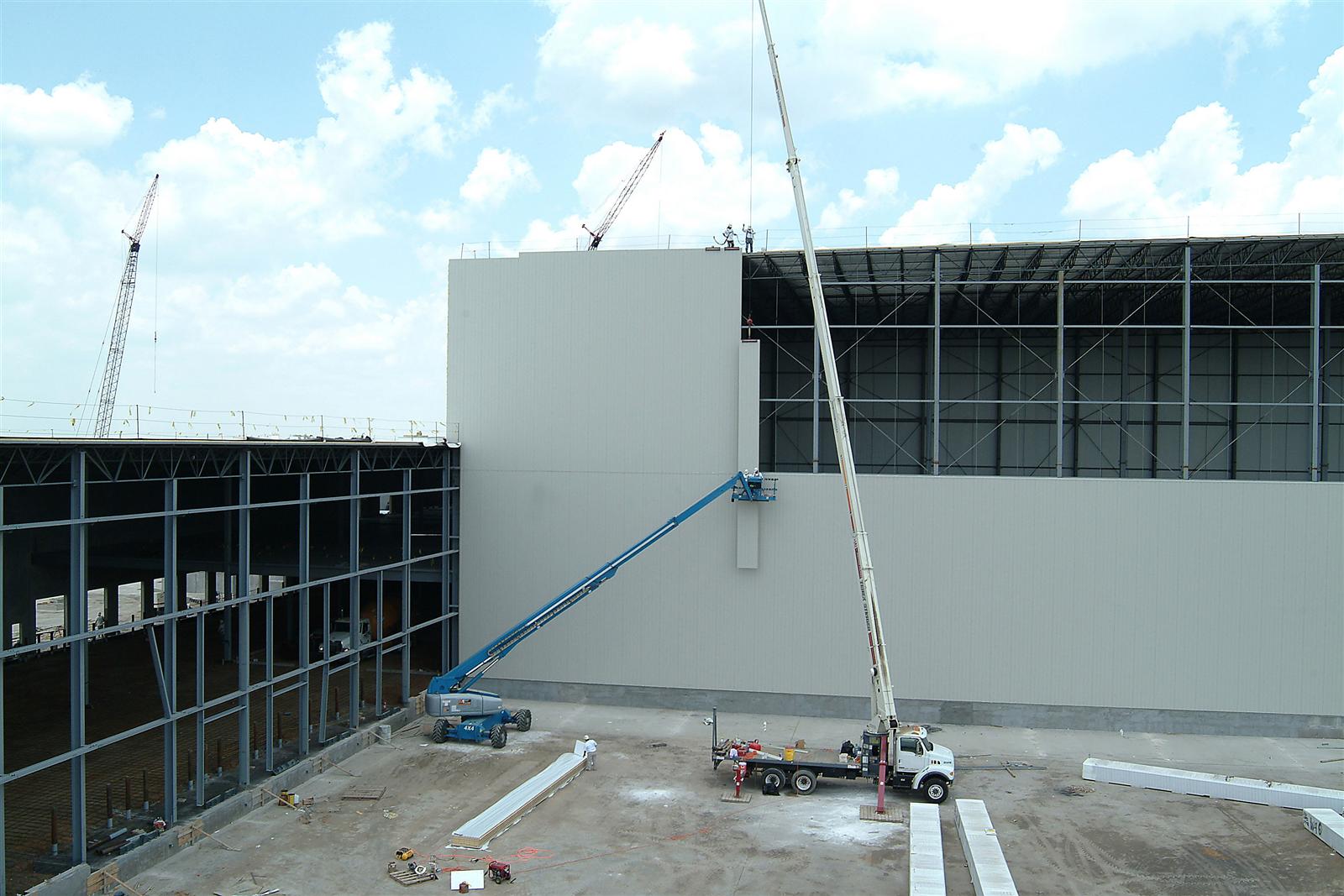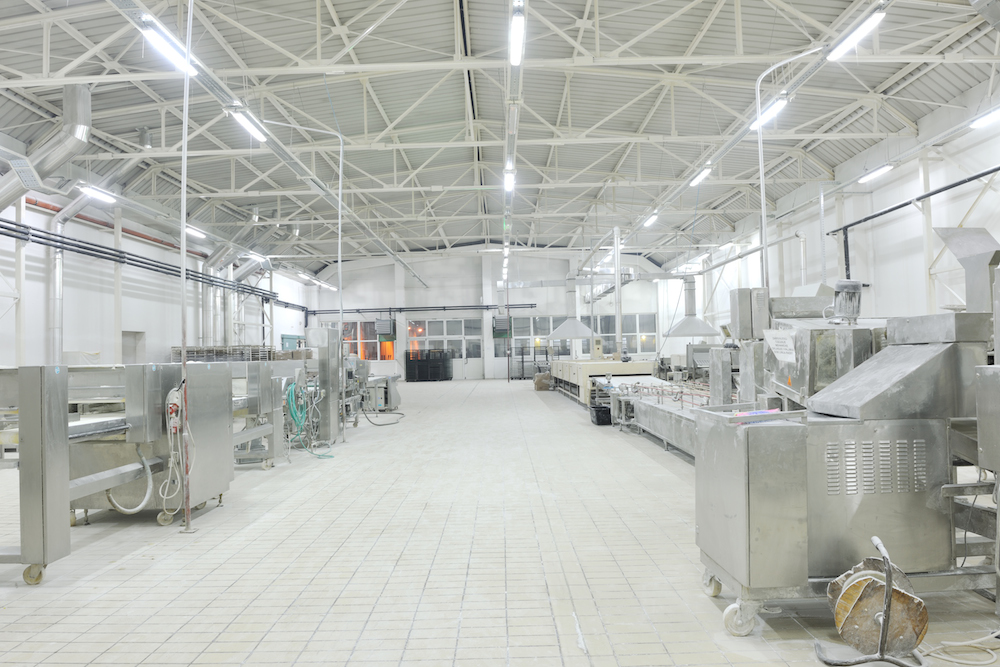Most food and beverage companies aren’t against being more eco-friendly — it’s just that achieving sustainability in a food processing plant can be easier said than done.
The upfront investment associated with energy-efficient solutions, such as “green” building materials and equipment, can be difficult to justify. How do you know which energy-efficient options will provide the best return on investment?
As we observe Earth Day this week, let’s look at ways to invest in your food plant that are both good for the planet and provide a solid return on investment (ROI).
1. Properly insulate your building envelope
Facilities lose the most heat through their walls and ceilings, which is why proper insulation is so critical. Using materials that absorb heat, rather than release it, can greatly reduce long-term energy costs.
Here are three types of building envelope insulation that offer good ROI:
1. Precast concrete insulated panels — At Stellar, we generally recommend precast concrete insulated panels, which act as a sponge to absorb and store heat. These are the highest quality option because they’re built in a controlled environment at an off-site location, which ensures they’re properly constructed. Though they are more expensive than tilt-up panels, precast panels are often the best choice, especially when site limitations come into play.
2. Tilt-up concrete insulated panels — These offer the same thermal benefits as their precast counterparts, but they are built on-site. The downside to tilt-up panels is that they are more susceptible to construction errors and weather conditions, which can affect their quality and lead to higher energy costs.
3. Insulated metal panels (IMP) — Insulated metal panels work in the same way as concrete panels, except the foam insulation is sandwiched between metal, rather than concrete. While they are less expensive, they do not offer the same durability as concrete panels, and can be damaged more easily. IMP systems also lack the structural characteristics of concrete panels, and usually require additional steel framing and columns to help support roof loads.
2. Reduce refrigeration energy by using variable frequency drives (VFDs)
Refrigeration costs can account for up to 60% of a facility’s total operating expenses, sometimes because refrigeration systems are unnecessarily working at full capacity. Installing a variable frequency drive (VFD) can help ensure your system never works harder than it needs to. By sensing temperature, pressure or flow, a VFD ramps down the appropriate pump or motor when a specified condition has been met, and ramps it back up once that condition falls outside its given threshold.
However, a VFD can be a significant investment, so it’s important to know which systems will benefit from this kind of regulator, and which will not. A VFD is not beneficial to a system that must run at full capacity at all times to maintain a specified condition. But, it is beneficial in a system that easily achieves a specified condition, yet continues to run at full capacity anyways.
Consider the difference in these two refrigeration systems:
- Blast chiller — A blast chiller usually experiences a significant amount of heat exchange due to the frequent entry and exit of food products. As a result, it must run at full capacity at all times to maintain a proper freezing temperature. It’s not worth installing a VFD in such a system, as it would rarely be utilized.
- Cold storage warehouse — A large distribution warehouse generally remains at a constant temperature for weeks at a time. Because the net heat load within the system rarely increases, the refrigeration system doesn’t need to run at full bore constantly. In this case, a VFD could provide significant energy savings by scaling down the refrigeration compressor motor.
3. Use LED lighting in processing areas
The debate over LED lighting almost always comes down to cost: Are LED lights really worth the extra expense? The key to optimizing lighting efficiency is knowing where to use LED lights in your facility.
LEDs are ideal for processing and packaging areas for three major reasons:
1. Longer lamp life — Most LED light fixtures have a lifetime of up to 10 years, which greatly reduces the downtime associated with replacing lighting in processing spaces.
2. Low energy use — LED lights use about 75 percent less energy than other types of fixtures. In processing and packaging areas that require constant lighting, LED lights create significant long-term savings.
3. Ability to withstand cold conditions — LED lights perform especially well in cold temperatures, which is necessary for most food processors. In comparison, fluorescent lighting is more likely to malfunction in extreme low temperatures.
Fluorescent lights are a viable option for your food plant’s less critical areas (employee welfare spaces and offices). To reduce energy use, it’s common to install occupancy sensors that automatically switch the lights off when the room is not occupied.
4. Think outside of the box when it comes to water conservation
Food plants use massive quantities of water for everything from processing to sanitation. It’s important to develop some sort of system for conserving water. Below are three water conservation tips you may not have considered before:
1. Reuse processing water for external sanitation — Water is often used to heat up or cool down a food product without coming in direct contact with it. Food processors can retain this water for cleaning items such as trucks, pallets and trolleys.
2. Use a water catchment system — Rather than allowing rainwater to drain into the ground, have a water catchment system pipe it into reservoirs to be used for things like irrigation and fire sprinklers.
3. Install flow meters on process equipment — A water control unit, or flow meter, helps ensure process equipment only uses a minimum quantity of water. It can regulate either flow rate or total volume, based on the equipment’s function.
5. Monitor your entire facility’s efficiency with a building automation system (BAS) controller
Most systems in a food plant — refrigeration, electrical, air conditioning, etc. — have built-in data collection controls that indicate performance efficiency. However, monitoring numerous unconnected systems can be difficult, and sometimes ineffective. One solution is to install a building automation system (BAS) controller to include every system in a comprehensive network, which offers significant energy reduction and other benefits, including:
- Scheduled energy use — As the BAS controller becomes familiar with daily routines, it can identify patterns in energy usage. The controller can be optimized to regulate lighting and HVAC systems to match occupancy schedules, which maximizes efficiency.
- Efficient facility management — BAS controllers collect real-time data on every process, which allows them to report system failures as they occur. This way, engineers don’t have to spend time diagnosing the problem, which reduces downtime and inefficiency. Owners can also use the data collected by the BAS system for accurate energy modeling.
BAS controllers are usually better suited for large plants containing numerous systems. Smaller plants may not have the need for an overarching network of automation controls.
Each food plant has unique needs, so sustainable solutions that work for one may not work for another. The key to making beneficial upgrades is understanding where there is room to improve, and just as importantly, where you can avoid unnecessary expenses.
Want to learn more about sustainable solutions for food processing? Leave a comment below or email me at foodforthought@stellar.net.




